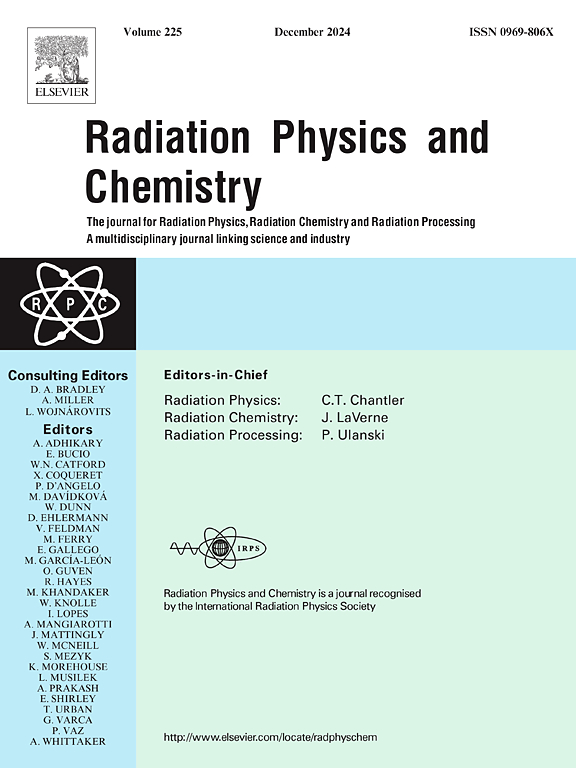结构、结晶度和辐照方式对pe辐照后自由基演化的影响
IF 2.8
3区 物理与天体物理
Q3 CHEMISTRY, PHYSICAL
引用次数: 0
摘要
聚乙烯(PE)作为生物医学应用的聚合物材料具有许多优点,包括一次性医用材料。根据PE的类型,其应用范围从一次性医疗器械包装到关节假体植入物和定制人工骨。由于热输入限制和EtO毒性,对这些产品进行灭菌的需要导致更多地使用不同形式的高能辐射(伽马、电子束(EB)和x射线)。本文研究了γ和电子束(EB)辐射对不同PE类型(LDPE、LLDPE、HMWPE、UHMWPE和HDPE)的影响,重点研究了初始结构和结晶度对辐照后行为和长寿命自由基演化的影响。对长寿命自由基进行长达6个月的监测,它们的演变与初始结构和结晶度有关。长寿命自由基引起的断链、氧化降解和性能下降会在辐照后持续很长时间,严重影响医疗器械在储存期间的性能,甚至在开发期间失效。本文建立了长寿命自由基的结晶度与辐照后演变之间的良好相关性,而对其他结构特征和添加剂的存在考虑较少。本文章由计算机程序翻译,如有差异,请以英文原文为准。
Impact of structure, crystallinity, and irradiation modality on post-irradiation free radical evolution in PEs
Polyethylene (PE) has many advantages as a polymeric material for biomedical applications, including single-use (SU) medical ones. Depending on the type of PE, its applications vary from single-use medical device packaging to implants for joint prostheses and custom-made artificial bones. The need to sterilize these products has led to more intensive use of different modalities of high-energy radiation (gamma, electron beam (EB), and X-ray) due to heat input limitations and EtO toxicity.
In this paper, we investigate the effects of gamma and electron beam (EB) radiation on various PE types (LDPE, LLDPE, HMWPE, UHMWPE, and HDPE), focusing on how the initial structure and crystallinity influence post-irradiation behavior and the evolution of long-lived free radicals. Long-lived free radicals were monitored for up to six months, with their evolution correlated to the initial structure and crystallinity. Chain scission, oxidative degradation, and decline in properties caused by long-lived free radicals can continue long after irradiation, significantly impacting performance during storage and even failure of medical devices during exploitation. This article establishes a good correlation between crystallinity and post-irradiation evolution of long-lived free radicals, with limited consideration of other structural features and the presence of additives.
求助全文
通过发布文献求助,成功后即可免费获取论文全文。
去求助
来源期刊

Radiation Physics and Chemistry
化学-核科学技术
CiteScore
5.60
自引率
17.20%
发文量
574
审稿时长
12 weeks
期刊介绍:
Radiation Physics and Chemistry is a multidisciplinary journal that provides a medium for publication of substantial and original papers, reviews, and short communications which focus on research and developments involving ionizing radiation in radiation physics, radiation chemistry and radiation processing.
The journal aims to publish papers with significance to an international audience, containing substantial novelty and scientific impact. The Editors reserve the rights to reject, with or without external review, papers that do not meet these criteria. This could include papers that are very similar to previous publications, only with changed target substrates, employed materials, analyzed sites and experimental methods, report results without presenting new insights and/or hypothesis testing, or do not focus on the radiation effects.
 求助内容:
求助内容: 应助结果提醒方式:
应助结果提醒方式:


